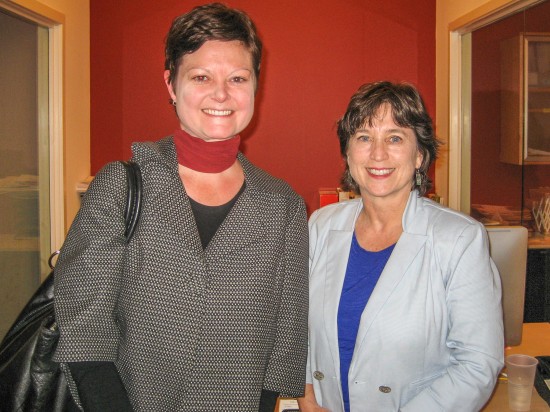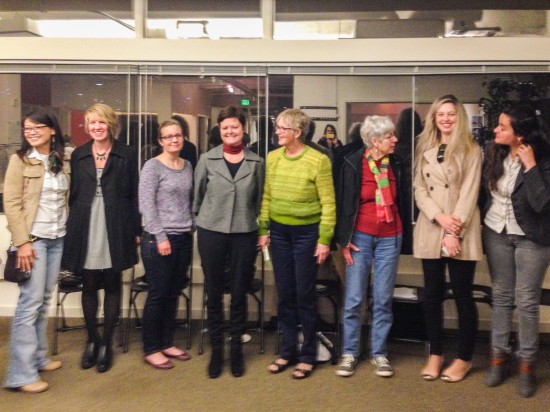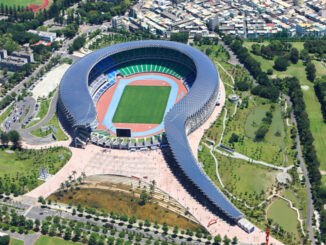Editor’s Foreword: This article reports on the Book Circle’s February meeting hosted by the Organization of Women Architects and Design Professionals (OWADP) based in the San Francisco Bay Area. The book featured and discussed was Women In Green, Voices of Sustainable Design.
It’s not often that one has the chance to read a book, and then discuss it with the author in person. The members of the OWA (Organization of Women Architects and Design Professionals) Book Circle had this privilege during their recent meeting hosted at Hamilton + Aiken, an architectural firm that has accomplished several green buildings in San Francisco.

The book on the table was Women In Green: Voices of Sustainable Design, by Kira Gould, co-author and Director of Communications at William McDonough + Partners in San Francisco, as well as a freelance journalist for Metropolis Magazine. Gould fielded questions from architects, designers, and educators at different levels of knowledge and experience in the sustainability movement. Some of the questions prepared by OWA Book Circle members to kick off and diversify the discussion are at the end of this article.
A book published in 2007 may seem dated, but its topic is vast and still remains relevant today. Women in Green is a collection of over 120 interviews that writer Gould and her co-author, architect Lance Hosey, compiled to illustrate and highlight how women have influenced the movement towards sustainability, a truly thought-provoking topic that needs constant discussion. We discussed the value of voice compared to the value of vision and the two sustainabilities — the technological approach where men lean toward technology for results and the ecological approach where women favor increasing awareness and changing the current way of living.
Some of the Book Circle conversation centered on Gould’s experience in writing the book; how she wanted to write with a male co-author in order to include the male perspective; and also how passionate the women she interviewed were about their collective causes for learning from nature (mimicry) and taking better care of the planet through attention to sustainability, by approach, regulation, and education.

The OWA Book Circle focuses on books that link women’s issues with the environment and indeed, these two topics of women’s gender roles and sustainability are very rich. It was virtually impossible to even scratch the surface in the brief discussion that took place. This well written and not too technical read of Women In Green is definitely a successful springboard into further discussion, especially regarding what has transpired in the seven years since the book’s publication.
Do you have a story about how this is happening in your part of the world? What have been your experiences as a man or a Woman in Green? Please contact us if you want to share your experience with the readers of GAB Report.
Here are some questions developed from chapter headings by OWA Book Circle members that you might find applicable regardless of whether or not you have read the book Women In Green: Voices of Sustainable Design:
- Question on Listening posed by Wendy Bertrand, Architect/Author: As pointed out, the power of words to warn and persuade is important, and the ability to talk about gender is introduced right up front in the book, a subject often avoided by women architects. The book also has wonderful examples of dialogue coming from both men and women about the specificity of gender and the sensibilities and sensitivities that are needed for sustainability. What was your reaction to this forceful introduction via the lens of gender?
- Question on What are Comfort and Delight? posed by Inge Horton, Architectural Historian/Urban Planner: In order to experience “comfort and delight” we use our senses as well as our intellect and psychological and cultural conditioning. A chapter quotes Rachel Carson: “It is not half so important to know as to feel.” Which senses do you feel are most important for you personally as a user in experiencing a comfortable space? Please be more specific than just mentioning vision, hearing, touch, taste, and smell.
- Question on What are Comfort and Delight? posed by Inge Horton, Architectural Historian/Urban Planner: To take that question one step further, discuss how we translate that to our work as female designers. There is of course an added component, and that is the user of the spaces. It could be that a space is used by members of both sexes, of different ages and cultural backgrounds, such as an airport terminal or a hospital. It could also be a very specific design project as a girls’ school. Gender-neutral design standards rarely fit specific situations. How would you use your senses in creating a comfortable, delightful, and sustainable space for different projects?
- Question on How Do We Measure Progress? posed by Abby Wittman, Designer. My sense is that some progress has been made in the United States in regards to sustainability, and there is a fine line between “green design” and “conventional design” because sustainable measures have into the building code language. I feel that practical code language is the key to making huge strides in conservation and taking it seriously. LEED is still optional, so it doesn’t seem to have as much power as mandatory building code measures. What is your experience with LEED versus Cal Green, etc.? How do clients respond to either parameters?
- Question on How Do We Measure Progress? posed by Wendy Bertrand, Architect/Author: In your experience, where and how is the dialogue about sustainability happening? With public or private clients, consultants, colleagues on design teams, within professional associations, in the schools, in the media, and/or among your friends?





Be the first to comment